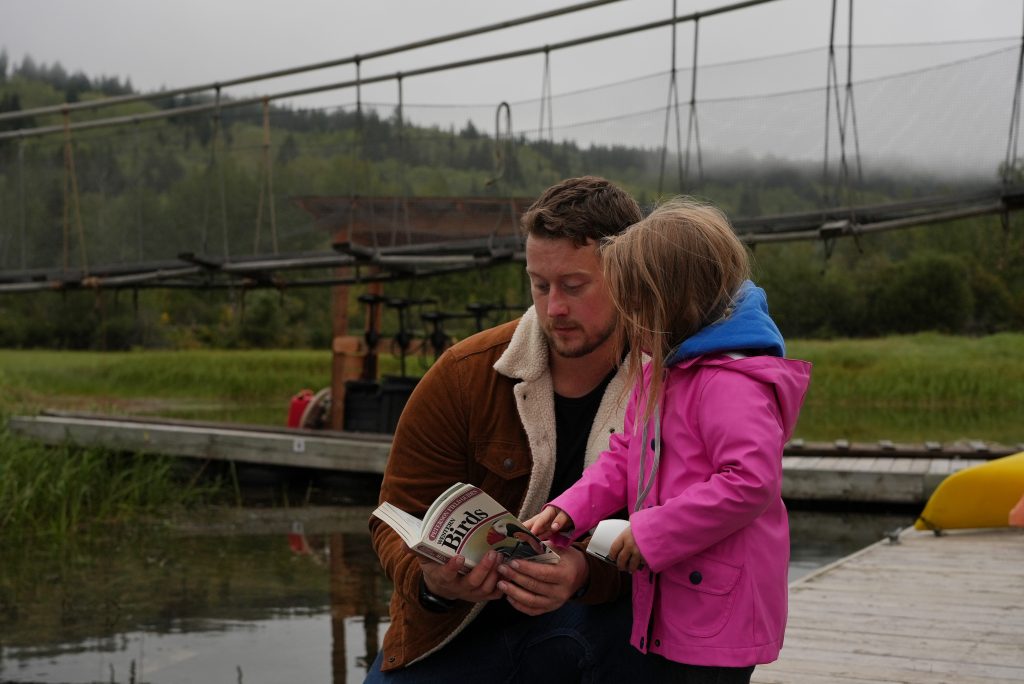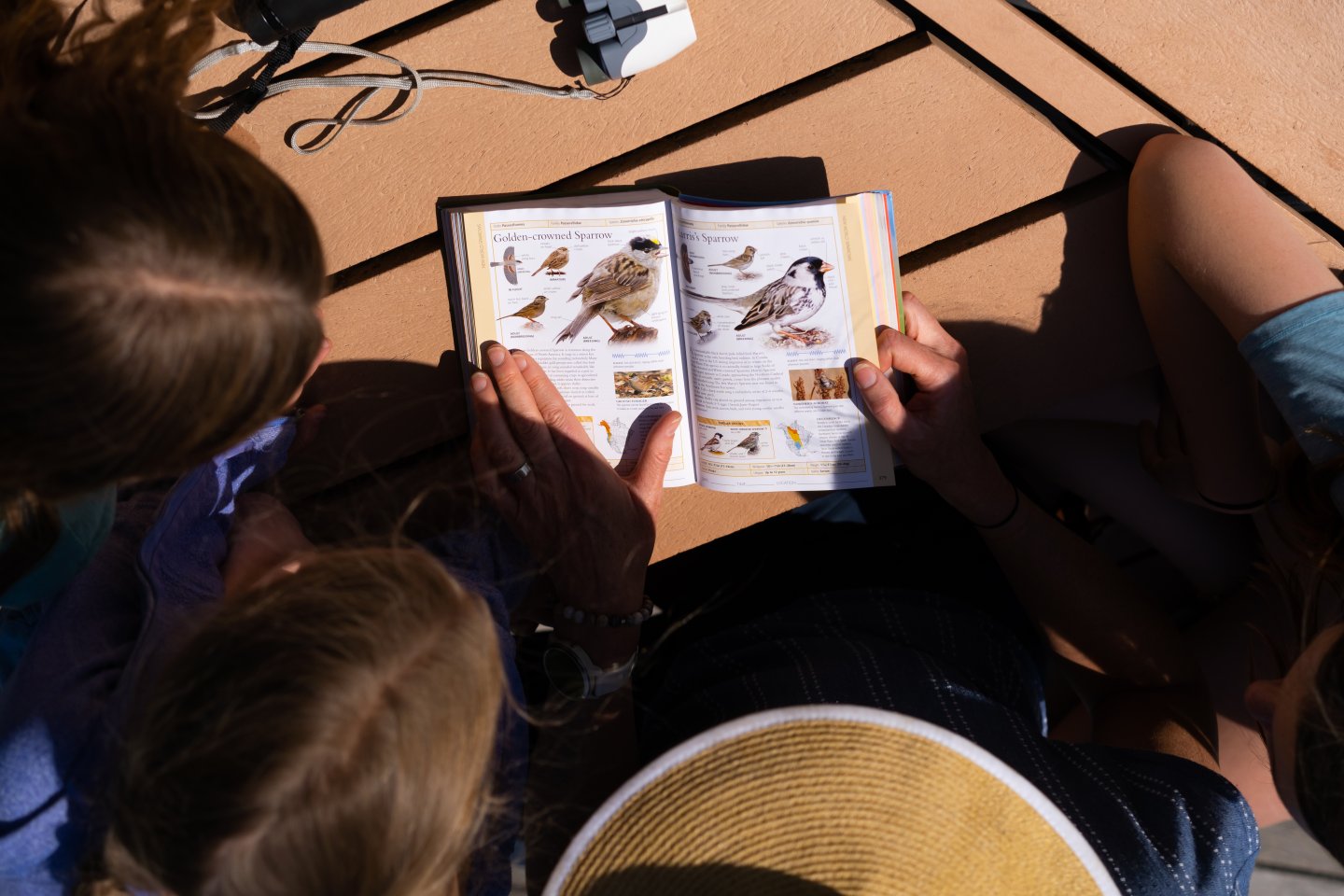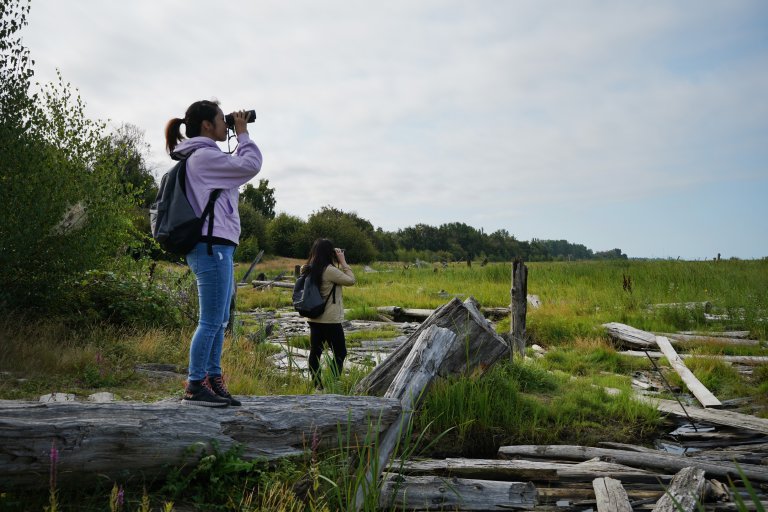Identifying birds by sight can be intimidating to new birders, especially if you go out with an experienced birder who can quickly call out a species name with barely a glimpse of the bird in question. If you start with the basics, you’ll be identifying birds in no time! Don’t think you can do it? Do you know what a Mallard looks like? What about a Bald Eagle? You probably already have a few common species you can ID without even realizing it.
Basics for IDing Birds by Sight
It’s easy to feel overwhelmed but learning bird identification basics will make narrowing down the options much easier. You will want to focus on a couple of important characteristics that birders use to identify birds by sight: Size, shape, colour, habitat, and behaviour.

Identifying birds by SIZE.
Estimating how many centimetres long a bird is isn’t necessary! When starting off IDing by size, use comparisons you are familiar with: “is this bird bigger or smaller than a crow?” and continue from there. You’ll quickly get a sense of general size comparisons. Just knowing that a bird is bigger than a chickadee and smaller than a robin will narrow your options down greatly.
Use the birds you see most often as a size comparison for the bird you’re trying to ID. Is it bigger or smaller than the common House Sparrow seen here?
Identifying birds by SHAPE.
Plump? Compact? Large bill? Long tail? Round head? There are many ways to describe the shape of a bird. You want to broadly identify the bird to help navigate what species it could be. Is it a duck, or simply duck-like? A songbird? A raptor? For example, seeing a merganser and knowing that it looks similar to a duck can be helpful to rule out other birds. Use a field guide to help you further, as it will be organized with similar birds grouped together. If you know roughly what type of bird it is, you can likely compare it with similar birds in the guide.
The Common Merganser seen here is duck-like in overall shape, but pay attention to the shape of its bill in comparison to “typical” ducks.


Identifying birds by COLOUR.
This can be broad, so don’t get too overwhelmed when you see things like “white undertail coverts” or “yellow supercilium” in field guides. To start, note the most dominant colours, as well as any really notable accents. Comparing the plumage of birds like flycatchers can be extremely confusing, even for experienced birders, so don’t get discouraged. However, if you see a black bird that has some red on its wings, you’re pretty close to identifying a Red-winged Blackbird.
Take note of the most dominant colours of the bird in question. This Red-winged Blackbird could be described as predominately black with a reddish-yellow section on its wing. Photo by Shayne Kaye.
Identifying birds by HABITAT.
Where are you and where is the bird? Having a local field guide with you will help tremendously, especially when starting out. Observe the type of habitat you’re in when you see the bird in question. Are you in a dense forest or on a beach? If you’re in a marshland, is the bird swimming in the water or jumping from branch to branch in a tree?
Observe the surrounding habitat of the bird in question. Stellar’s Jay’s prefer evergreen forest habitats but are also a common sight in campgrounds, parks, and backyards.


Identifying birds by BEHAVIOUR.
Some birds have distinctive actions. Great Blue Herons often stand motionless for long periods of time as they hunt. Double-crested Cormorants dry themselves with their wings spread out while standing near the water’s edge. Turkey Vultures rarely flap their wings, instead, they glide on warm air thermals in the sky. Note down everything you can, even if it doesn’t seem important. Looking up unique bird behaviours online can sometimes lead you directly to the species you saw. Learning to recognize a few basic traits can help narrow down potential species at first glance.
Monitoring a bird’s behaviour can really help with IDing. Red-breasted Nuthatches are quick birds that have no regard for which way is up and are often seen upsidedown as they forage on trees. Photo by Christina Schulz.
Bird Identification Tools
There are many resources available to help new birders get comfortable with bird identification. Whether you decide to use an app or a book to help with identification is up to you. Here are some great tools that can aid you in identifying birds by sight.
Field Guides
A quality field guide for your region is probably the best thing you can get to help your birding skills. There are several prominent guides, like Sibley, Peterson, and National Geographic that offer a broader range of species. You can also pick up smaller, local guides that are more specific to your region. Some use illustrations and some use photos, so you may find it helpful to have multiple guides on hand to help with difficult identifications.

Mobile Apps
There are plenty of birding apps out there, some better (or more specific) than others. The indispensable one is Merlin, by The Cornell Lab. It can guide you through identification with a few simple questions. It can even pick out a species based on your recordings of its call!
Other Birders
Most regions will have an online forum or local birdwatching/nature group that you can reach out to. If you can share a few details and/or a photo of the bird in question, you’ll often get an answer pretty quickly. Other birders you see while out on the trails are often glad to help spread their knowledge if you have a question.
Start out with a small area near you and use the tips in this guide to help you identify birds by sight. Focus on the basics first to get comfortable and you’ll be identifying birds in no time! Check out our self-guided itineraries to find some great birding spots to practice your skills in identifying birds.
Want to learn more birding basics? Check out our other Birding 101 Blogs:
- Birding 101: What is Birding?
- Birding 101: Identifying Birds by Sound
- Birding 101: Birding Glossary
- Birding 101: Essential Apps
- Birding 101: What’s in Your Bag
- Birding 101: Backyard Birding
- Birding 101: Counting Birds
- Birding 101: Responsible Birding



